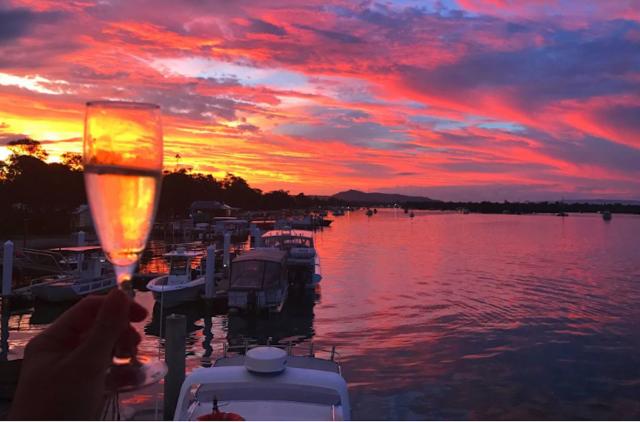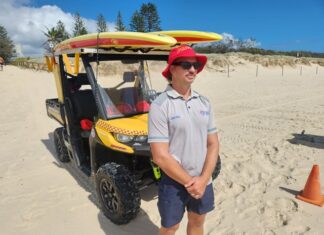It started out as a typical Friday night beer o’clock bulldust session, but it soon evolved into something more.
The conversation, between a few longtime local surfers of varying ages, began as a critique of a recent article on the surf website Stab, titled Rich People Only – how coastal gentrification is changing the surfing experience and culture.
Writer Jed Smith was focused specifically on Malibu, California, and the North Shore of Oahu, Hawaii, whose coastal strips have increasingly become the exclusive playgrounds of the mega-rich, but as we talked, it became obvious most of the group felt our town was heading in the same direction.
Smith made his case by contrasting the kind of people who own (and occasionally live in) oceanfront and oceanside homes between Haleiwa and Sunset Beach now – average rent $US4500 a month for a family home – and the battling single mums who rented there 20 years ago while raising such surfers as big wave champion Jamie O’Brien and twice world champion John John Florence.
Beach culture seemed to thrive in adversity, much as it still does in the favelas of Brazil’s coastal cities.
In Noosa you need only go back the same 20 years or so to find parallels in the surfers who were bred in modest circumstances in places like Sunshine and Sunrise Beach, where local postie Peter Biden and others made it a personal mission to get all the local groms into the surf for training sessions that helped create champions like Julian Wilson, Josh Constable, Ryan Campbell and Harrison Roach.
Of course, the argument about adversity making champions falters somewhat when you look at Noosa’s current wave of emerging surf heroes, many of whom come from the town’s wealthiest families, although it is widely believed that the rental crisis is driving some coaches and trainers – the kind that do it as a community responsibility rather than a job – out of town.
But this was where our beer circle conversation got really interesting, because it was generally agreed that the effect of gentrification on the local surf culture was just a symptom of a much greater problem. Said one: “I look around the surfing community and see at least half a dozen people who have multiple houses here. Couldn’t they help out with an affordable renter? Our people in power keep going on about the need for affordable housing, but it’s not based on their own experience. It’s coming from, ‘Oh, my cleaner is finding it harder to get to work because she has to live so far away. I might have to get a new cleaner, how inconvenient.’ If they were fair dinkum they’d be getting behind build-for-rent schemes which have worked in many places.”
Another voice: “Ski resort towns in many places have faced up to the same problems we have here with hospitality workers who have nowhere to live, but we haven’t. Tewantin used to fit the bill, but it’s out of the price range now. But I’m not talking about dormitory suburbs. We don’t want renters talking just to renters in one part of town while billionaires talk just to billionaires in another part. We need to mix it up.”
(While the beers were being reloaded I made a note to do a reality check on rental affordability later, and here it is: at the 2016 Census, median weekly rental for a house in Noosa Shire was $400. Australian Bureau of Statistics figures for 2022 have it at $800, but try finding one. That’s a 100 per cent increase in rents while over the same period wage growth was less than six per cent.)
So, in the space of just two beers we’ve gone from how the rich are ruining blue collar surfing to the affordable housing crisis and social engineering. We crack another round and move onto the even bigger issues.
“How many billionaires are there in Noosa?” asks another voice.
People put down their beers and start counting with their fingers. “I suppose there’s Gina and the Russian, for starters,” says the same bloke.
“I’d say a dozen at least,” says the authoritative voice of the leader of the pack.
“But that’s only the leading edge of the mega-rich. And the biggest problem is not the ones who live here but the absentee owners who are changing the way we live here from afar. There are also others who actually want to be a part of the community in some way and contribute, although to conduct their businesses on a global scale they can’t live here. So my position is, there’s no point hating rich people because they can afford to buy up the best parts of Noosa. We have to work out how to live in the real world together and build some balance around that.”
Another voice chimes in: “Yeah, I can relate to that. We don’t want to exclude anyone from our community, but we want them to understand how we got to where we are and why we don’t want to lose that.”
Pack leader again: “That’s why there’s a town plan. It explains that. We don’t build up and we don’t build out. And, to be fair, a lot of rich people have commissioned great cutting edge architecture within that framework.”
Another voice: “But let’s cut to the chase here. What kind of Noosa do we want for the future? We have to go back to first principles and examine what unites us, not what divides us. And what can unite us here, if we embrace it, is multi-culturalism. We haven’t done that yet. We recognise the Traditional Owners and we eat at ethnic restaurants whose owners and staff mostly have to live outside the shire, but we’re still a white-bread community at heart.”
“Hear, hear. If Biloela can embrace a Tamil family then why can’t we make an effort to look after some Ukrainian refugees and find ways for the Kabi Kabi to live and work on country!”
We’d gone from micro to macro in a heartbeat and the fourth beer. It was time to wrap it up before we got totally silly, but riding my bike home in the dusk, I couldn’t help thinking that these were the conversations we need to have more often. An article called Rich People Only had sparked a debate about something that is not yet a reality in Noosa, but it’s gotten a lot closer in the past couple of years, and we need to consider what that means for our future.








